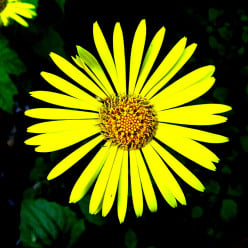New Capsule: Picture Caption
Picture captions, alt tags and image attribution are a mess on HP.
Why not introduce a new capsule solely for captions and attribution, entirely separate from the picture and its alt tag?
When a hubber uploads a picture, tell them to add an alt tag. It should be the simplest description of the picture that they can manage. Tell them it is for the benefit of the visually impaired (who use read aloud software) and nothing else.
I would allow no more than 10 characters in the field to keep out anything remotely like keyword stuffing. No HTML to keep out linkspam.
Ideally, a picture caption capsule would magically appear beneath the picture when it was saved to the page. Otherwise, just add the capsule as an option. Tell hubbers that the capsule exists in the alt tag instructions.
The text would be no different to any other text on the page except smaller and sat up to the picture above it.
The image attribution field would say source (as now) and deliver a nofollow link.I don't see any problem in the capsules. I am able to read the captions of images. And regarding links, they have removed the links to be visible to registered members while browsing on hubpages. Only visitors can click on the links and go to the source pages.
But image captions are clearly visible if you incorporated the caption. It is visible beneath your image and also on the browser while hovering over the image. So, there seems no problem.The problem is the alt tags. Years ago some blackhat SEO fiends discovered that you could boost a page in the SERPS by stuffing keywords into the alt tags. Google noticed and developed a way to penalize this kind of practice.
Alt tags should only be used for the purpose they were designed for. HP pretty much encourages misuse by making captions into alt tags.I am unaware of this. I don't know what alt tags are.
The alt tag is the description of the photo which the Google bots cannot see, thus the description. HP uses the caption for the alt tag. It can be confusing. I added the license to my capsules for the Commons, by the way, and it did not take long.
I agree with you Will, but find it highly-unlikely HubPages is going to "wake up" and fix this, given how long it's been a known and complained-about issue.
Accessibility of the site is something admin says is key, but clearly money-making accessibility trumps universal access for visually-challenged readers.HP have cost issues, and ease of use issues (they do not want to scare away new writers). I reckon the alt tag issue is important enough to put a small, extra step into the publication process.
We will see what they decide. The last thing we want is cost issues crippling the site.
The bit I don't understand about the whole captions/alt tags thing is how what HubPages has done can be reconciled to a source's requirement to attribute the picture and link to it for some images.
Are they saying that no picture can have a proper picture attribution as required by its source (i.e. one which allows its use BUT only on the basis of proper attribution)?
I've checked a few of mine and they seem to have lost their attribution links - which I routinely included.
To my mind it's very poor practice.
I also agree that your solution might be one way out of this craziness - except for the fact that the attribution should at all times remain linked to the picture - otherwise it runs the severe risk of becoming orphaned.
I wonder if anybody on HubPages ever read the "orphaned image" debate re copyright?The attribution is not lost. It is there. You log out from your account and then visit the page. Then hover the browser on your images. You will find a letter
" i " on the right hand at the top corner of your image. Click it and you will see the link and attribution visible to you.But the "i" does not appear unless your cursor hovers over it. In other words if you just LOOK at the image you see nothing.
I would interpret this as meaning it is "hidden"
As long as there is correct attribution somewhere on page and it is clear which pic is being attributed that is fine.
HP are fine with attributions at the foot of the page, so they clearly understand this.
The main issue is to keep alt tags clean of any spamminess. The secondary issue is persuading hubbers to do the right thing.
A clear two stage process is a little more time consuming but it is (almost) foolproof. Even a first time user should understand what is happening and why.
For anyone interested in the subject here are a few hundred pages on keyword stuffing in alt tags:
https://www.google.co.th/webhp?sourceid … alt%20tagsWriter Fox says description of photo should be in caption and very brief in length with no keyword stuffing. He also says, per SEO, not to have a title for the photo to avoid more keyword stuffing. I put the source and photographer and now, the license in the source box, or whatever the site requires.. Other sources quoted here mention a very brief description in caption. Example: Man drinking Diet Coke, or Swimmer Riding the Ocean Waves. alt tag
There is nothing wrong with captions that are just plain text, except perhaps that they can also encourage repetition of keywords.
Having H2 headers in picture capsules, on the other hand is bad practice partly because they encourage hubbers to add extra keywords to the page in an unnecessary way.
I also think H2 headers are an especially sensitive area because Google gives them extra weight when deciding what the page is about.
We can't be sure how Google operates its anti keyword stuffing algos but using an H2 is pretty much like shouting.
I try to minimize the use of keywords in any possibly sensitive area like alt tags, H2 headers, bolded or italic text and anchor text.
I wouldn't go mad on this, of course, you need to be give your readers the info they are looking for.
Natural English usage should do the trick. Overly optimized old style SEO written pages are a bad idea these days.Thanks, Will, for this additional explanation. Now, if hubbers would use these suggestions, photo capsules could improve. You have been a big help.
H2 is a secondary heading, such as the photo title. Note; I just read an article with a video by Matt Cutts that indicated a photo should not have a title and that all words should be in the alt tag (description). Why does HP have a photo capsule title if that is true?.
Thanks.
That comment from Matt Cutts is interesting. Blogger, which is owned by Google, has a place to leave captions but also includes alt tags. I think they should be separate but both included.He said a photo does not need a title, so you are correct. Many folks apparently do use both. Keyword stuffing is the issue to avoid.
Thanks for sorting this out, I now understand,
I will remove the titles from my photos as it is adding to keyword stuffing unnecessary.
H2 headers in picture capsules are, at the very least, an unnecessary temptation for hubbers to mess up!
Some hubbers even use a pic at the top of a page which has the keywords in the H2 header and the alt tag/caption.
They then start the text with the keywords...
This gives you the keywords four times in straight succession before the end of the first sentence ---Title, H2, alt tag, first sentence. Not a great start.
If people add an H3 sub header with keywords at the start of the text, that gives you 5 straight repetitions, four of them in areas Google pays special attention to.
Related Discussions
- 8
What is an alt tag and ow do I do it?
by Catherine Giordano 9 years ago
I have seen comments that say picture should have a alt tag. How do I put an alt tag on a picture?
- 140
Alt Tags
by ologsinquito 9 years ago
Over the last few days, I took Writer Fox's suggestion and began using Alt Tags on some of my photos. (I would have done this sooner, but I focused my efforts elsewhere when there were technical difficulties.) Very quickly, after adding Alt tags to my hub with the most traffic, which had gotten...
- 10
Adding pictures to Hubpage
by idreesfarooq 13 years ago
Hi, i have a hubpage on seo tips for wordpress.I have 7 pictures in my photo capsule. I am not satisfied with the pictures placement. Kindly guide me how i can adjust them. I will very thankful to you.Thanks,Idrees
- 16
Tips On Working On SEO
by Modern Cinema 3 years ago
Hi everybody ,Though I myself have just started writing hubs.I have been writing blogs for quite a long time now for various blog and niches.I am willing to share my insight which can help new hubbers to rank more easily on google.First, you need to write and visualize the whole idea in your head...
- 53
I've seen a huge increase in traffic......
by ryankett 14 years ago
And indeed my hub rating, after doing something with my hubs.It may seem like stating the obvious, but I went through all of hubs and put the absolute maximum number of tags that I could before it said "you have too many tags" or whatever it says. When it said that I had too many tags I...
- 33
HELP! How do you create a link within a Hub?
by Thomas Dowling 7 years ago
I give! I've searched the first 3 or 4 pages of "Getting Help" Forum and I've read the entire Link's Capsule section in the Learning Center (http://hubpages.com/learningcenter/using-hubtool). That Hub, by the way, has a large number of Quick Links in it. How do you create a list of topics...












